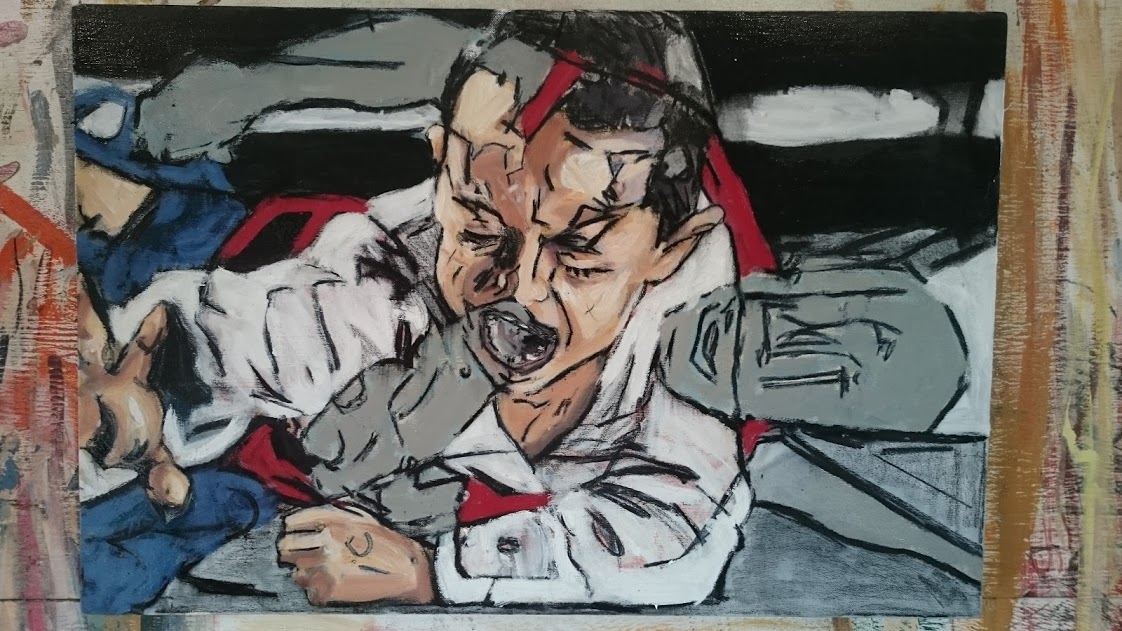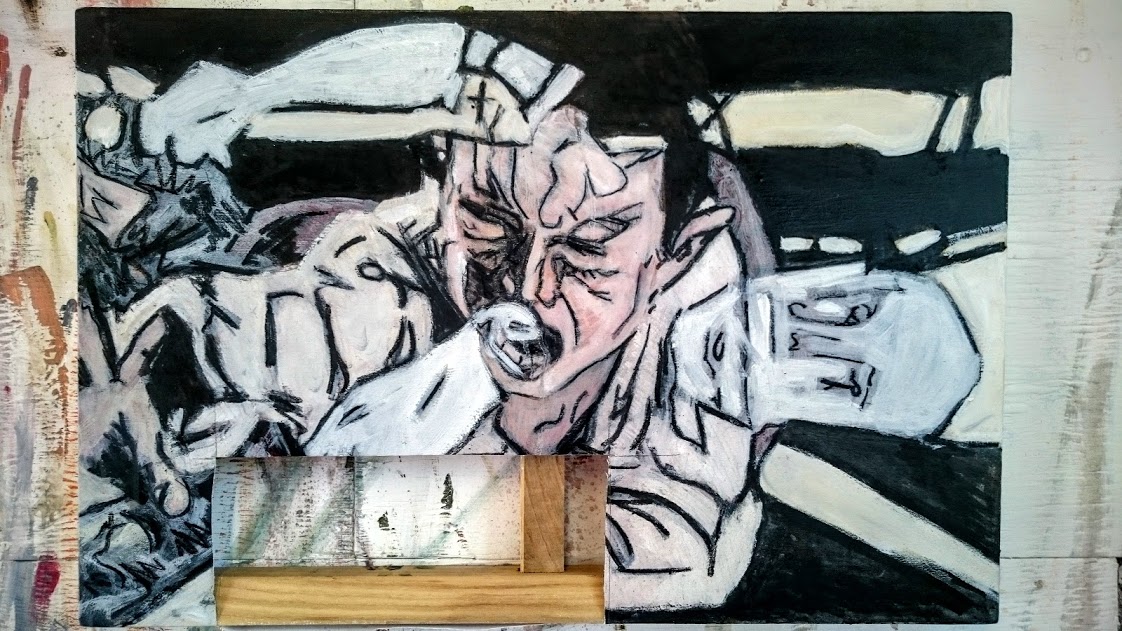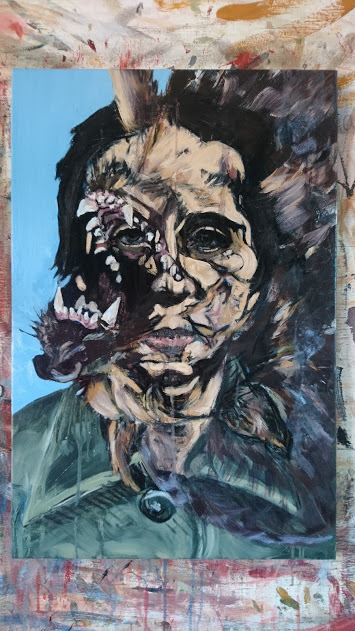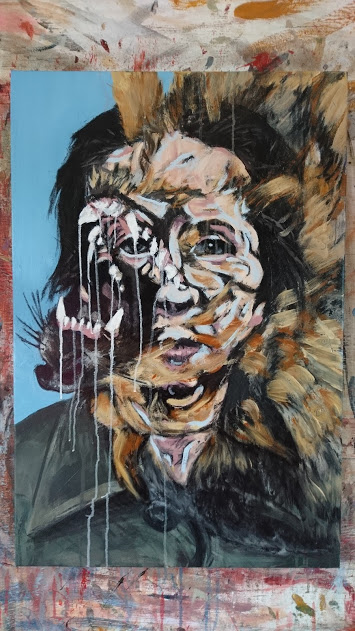Cy Twombley once said "it's absurd to talk about paintings that you haven't finished". With that in mind I'm going to talk about paintings that I haven't finished.
No matter how long you have been painting, there is always a danger of overworking a canvas. The feeling of losing something that had promise at some stage isn't pleasant but I think its important to look at these errors and, all being well, aim to avoid them in future works.
Early stage of "The Vanity Fair" (inspired by a section of John Bunyan's "The Pilgrim's Progress". The bunting and sky is light and the upper figure is visible through the clouds.
The sky has become muddy, the upper figure has all but been resorted to an illustration and the lower figure's skin tones are overworked and crowded.
The child's skin tones and using primary colours in the amputee figure worked in the earlier stage. In an attempt to unify the images it all became washed out. The one section that survived is the child's arm which was quickly removed from the rest.
"The Woman With the Dogs" is probably a work that I will come back to at some point. The dog in the earlier stage is melting into the portrait and has very few marks. In trying to bring out the woman's face more, it eventually became overworked with too much happening in the image as a whole. The drips were the final nail in the coffin - for now.






